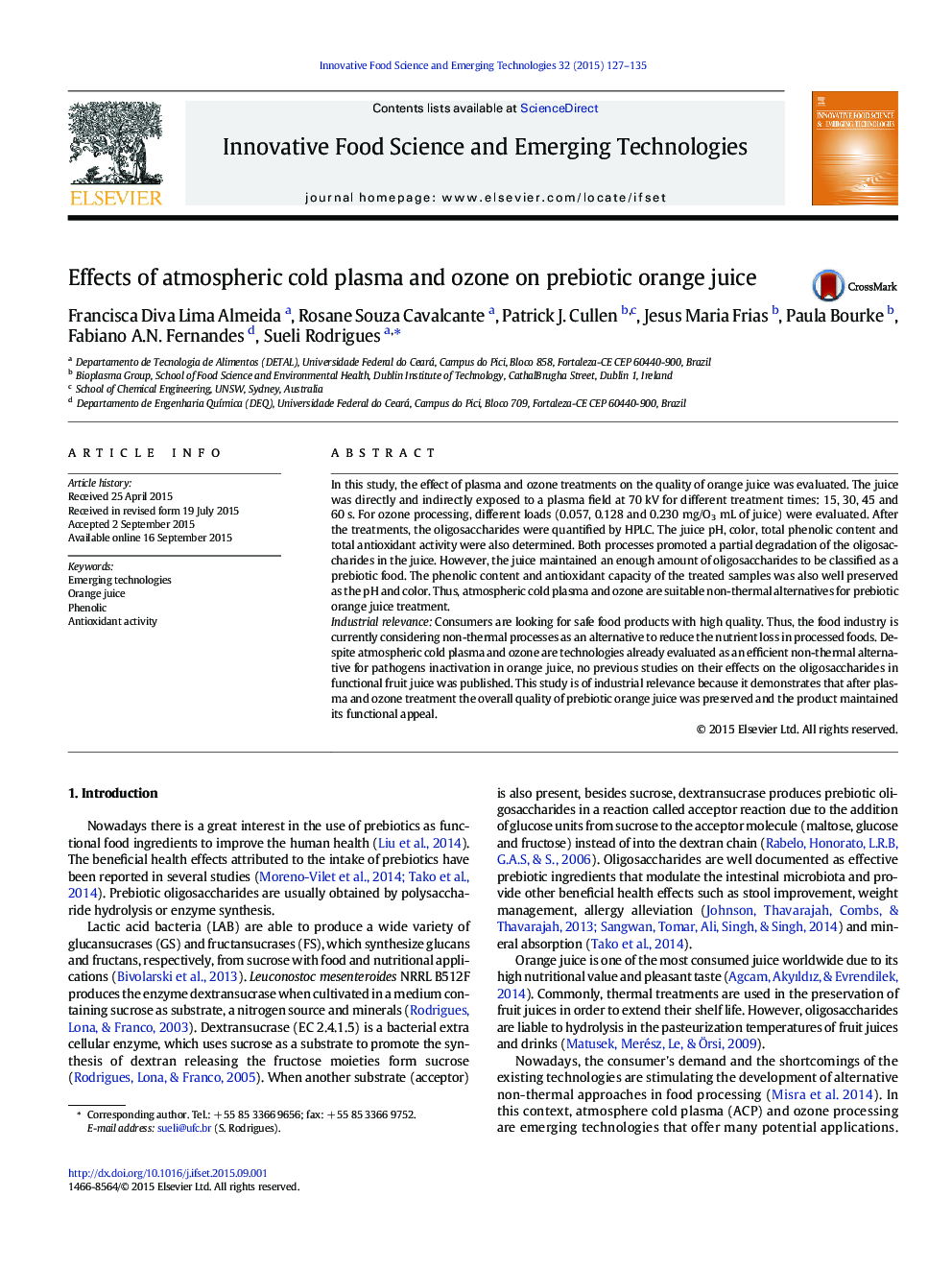| کد مقاله | کد نشریه | سال انتشار | مقاله انگلیسی | نسخه تمام متن |
|---|---|---|---|---|
| 2086411 | 1545534 | 2015 | 9 صفحه PDF | دانلود رایگان |
• Prebitoic orange juice was treated by atmospheric cold plasma (ACP).
• Direct and indirect exposure were evaluated in ACP.
• Prebiotic orange juice was ozone treated with crescent ozone loads.
• Treatments did not affect the phenolic content and antioxidant capacity of the juice.
• Treatments did not significantly affect the oligosaccharides content.
In this study, the effect of plasma and ozone treatments on the quality of orange juice was evaluated. The juice was directly and indirectly exposed to a plasma field at 70 kV for different treatment times: 15, 30, 45 and 60 s. For ozone processing, different loads (0.057, 0.128 and 0.230 mg/O3 mL of juice) were evaluated. After the treatments, the oligosaccharides were quantified by HPLC. The juice pH, color, total phenolic content and total antioxidant activity were also determined. Both processes promoted a partial degradation of the oligosaccharides in the juice. However, the juice maintained an enough amount of oligosaccharides to be classified as a prebiotic food. The phenolic content and antioxidant capacity of the treated samples was also well preserved as the pH and color. Thus, atmospheric cold plasma and ozone are suitable non-thermal alternatives for prebiotic orange juice treatment.Industrial relevanceConsumers are looking for safe food products with high quality. Thus, the food industry is currently considering non-thermal processes as an alternative to reduce the nutrient loss in processed foods. Despite atmospheric cold plasma and ozone are technologies already evaluated as an efficient non-thermal alternative for pathogens inactivation in orange juice, no previous studies on their effects on the oligosaccharides in functional fruit juice was published. This study is of industrial relevance because it demonstrates that after plasma and ozone treatment the overall quality of prebiotic orange juice was preserved and the product maintained its functional appeal.
Journal: Innovative Food Science & Emerging Technologies - Volume 32, December 2015, Pages 127–135
